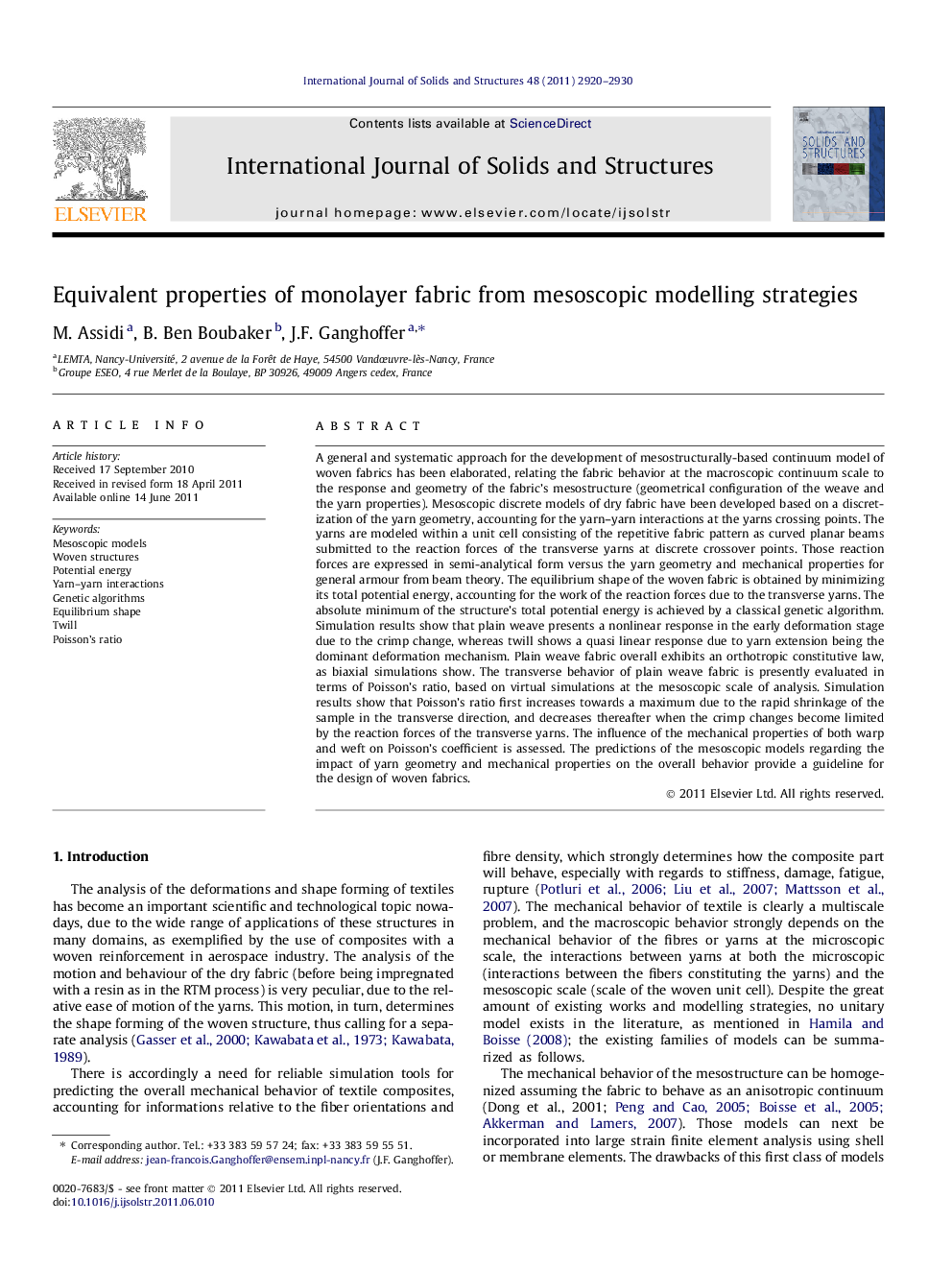| کد مقاله | کد نشریه | سال انتشار | مقاله انگلیسی | نسخه تمام متن |
|---|---|---|---|---|
| 278573 | 1430291 | 2011 | 11 صفحه PDF | دانلود رایگان |

A general and systematic approach for the development of mesostructurally-based continuum model of woven fabrics has been elaborated, relating the fabric behavior at the macroscopic continuum scale to the response and geometry of the fabric’s mesostructure (geometrical configuration of the weave and the yarn properties). Mesoscopic discrete models of dry fabric have been developed based on a discretization of the yarn geometry, accounting for the yarn–yarn interactions at the yarns crossing points. The yarns are modeled within a unit cell consisting of the repetitive fabric pattern as curved planar beams submitted to the reaction forces of the transverse yarns at discrete crossover points. Those reaction forces are expressed in semi-analytical form versus the yarn geometry and mechanical properties for general armour from beam theory. The equilibrium shape of the woven fabric is obtained by minimizing its total potential energy, accounting for the work of the reaction forces due to the transverse yarns. The absolute minimum of the structure’s total potential energy is achieved by a classical genetic algorithm. Simulation results show that plain weave presents a nonlinear response in the early deformation stage due to the crimp change, whereas twill shows a quasi linear response due to yarn extension being the dominant deformation mechanism. Plain weave fabric overall exhibits an orthotropic constitutive law, as biaxial simulations show. The transverse behavior of plain weave fabric is presently evaluated in terms of Poisson’s ratio, based on virtual simulations at the mesoscopic scale of analysis. Simulation results show that Poisson’s ratio first increases towards a maximum due to the rapid shrinkage of the sample in the transverse direction, and decreases thereafter when the crimp changes become limited by the reaction forces of the transverse yarns. The influence of the mechanical properties of both warp and weft on Poisson’s coefficient is assessed. The predictions of the mesoscopic models regarding the impact of yarn geometry and mechanical properties on the overall behavior provide a guideline for the design of woven fabrics.
Journal: International Journal of Solids and Structures - Volume 48, Issue 20, 1 October 2011, Pages 2920–2930